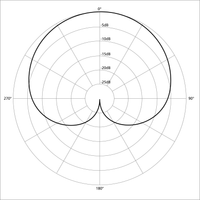Polar patterns are the shape of the area around a microphone's capsule where it will pick up audio.
There are five main shapes:
 cardioid |
 omnidirectional |
 supercardioid |
 figure eight |
 hypercardioid |
Most of the time, the polar pattern comes into play when trying to "aim" a microphone at a particular sound source while trying to avoid another. Most handheld microphones have a cardioid pattern for that reason: we want to pickup someone's voice and reject sound coming from the audience. Another great example is when recording orchestras or in a place with great acoustics, an omnidirectional microphone can be used to record both the music and the reverberation from the room.
There are several miking techniques that also require specific patterns or combinations of patterns. Some really interesting techniques for binaural sound (an attempt to mimic a 3D sound image) and stereo miking take advantage of the different polar patterns and allow us to achieve really amazing results. We'll cover those individually in future posts.





